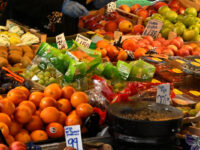Food and grocery imports into Australia are growing faster than exports, but the overall value of the industry rose by 4 per cent last year to $133 billion.
Data from the Australian Food and Grocery Council (AFGC)’s latest State of the Industry report, which analyses data for 2019/20, shows sales to China drove most of the overall 7.9-per-cent increase in exports to $41.3 billion, with a significant increase in meat volume and an 18-per-cent rise in human pharmaceutical products, taking the category to $6.6 billion.
Overall imports rose by 12.1 per cent to reach $39.9 billion, showing a net food and grocery industry trade surplus of $1.4 billion.
Other data from the report shows a slight increase in food and grocery’s share of total Australian manufacturing, up 0.4 per cent to 32 per cent, and a decline of 0.2 per cent in total industry employment to 270,801 people.
AFGC CEO Tanya Barden said the increase in exports reflected how important export markets are to local manufacturers.
“In a period affected by drought, bushfires and the onset of the Covid-19 pandemic, Australian food and grocery manufacturers demonstrated their resilience and resourcefulness by growing the value of this vitally important industry, particularly in overseas markets,” Barden said.
“While the lift in sales is a positive for the industry, it hides the fact that businesses have incurred increased costs due to several factors including the COVID-related expenses of maintaining safe workplaces, operational changes to meet increased demand and address supply chain disruptions, a tripling of sea freight charges and increases in commodity and packaging prices,” said Barden.
“These cost increases follow a decade where costs have grown at double the rate of wholesale prices and there is a need for the industry to recoup costs going forward to maintain viable operations.”
She said increasing exports of high-value products is a key goal for Australian food and grocery manufacturing.
“The State of the Industry data … provides a clear picture of the challenges and opportunities for Australia’s food and grocery manufacturers.
But reversing a decade-long trend of stagnant investment in the industry is critical to long-term success, she warns, as is ensuring near-term stability with a more rational approach by retailers to cost pressures than has occurred over the last decade.
“We have said that, with the right policy settings to encourage investment, Australian food and grocery manufacturing can double in value to $250 billion by 2030. Important decisions to encourage investment need to be made now so that the industry can secure a strong future and help the Australian economy rebound from the challenges of the Covid-19 pandemic.”
The new report shows a 5.2-per-cent increase in capital investment in the industry over the year, well below the level the AFGC believes is necessary to achieve the 2030 vision.

















